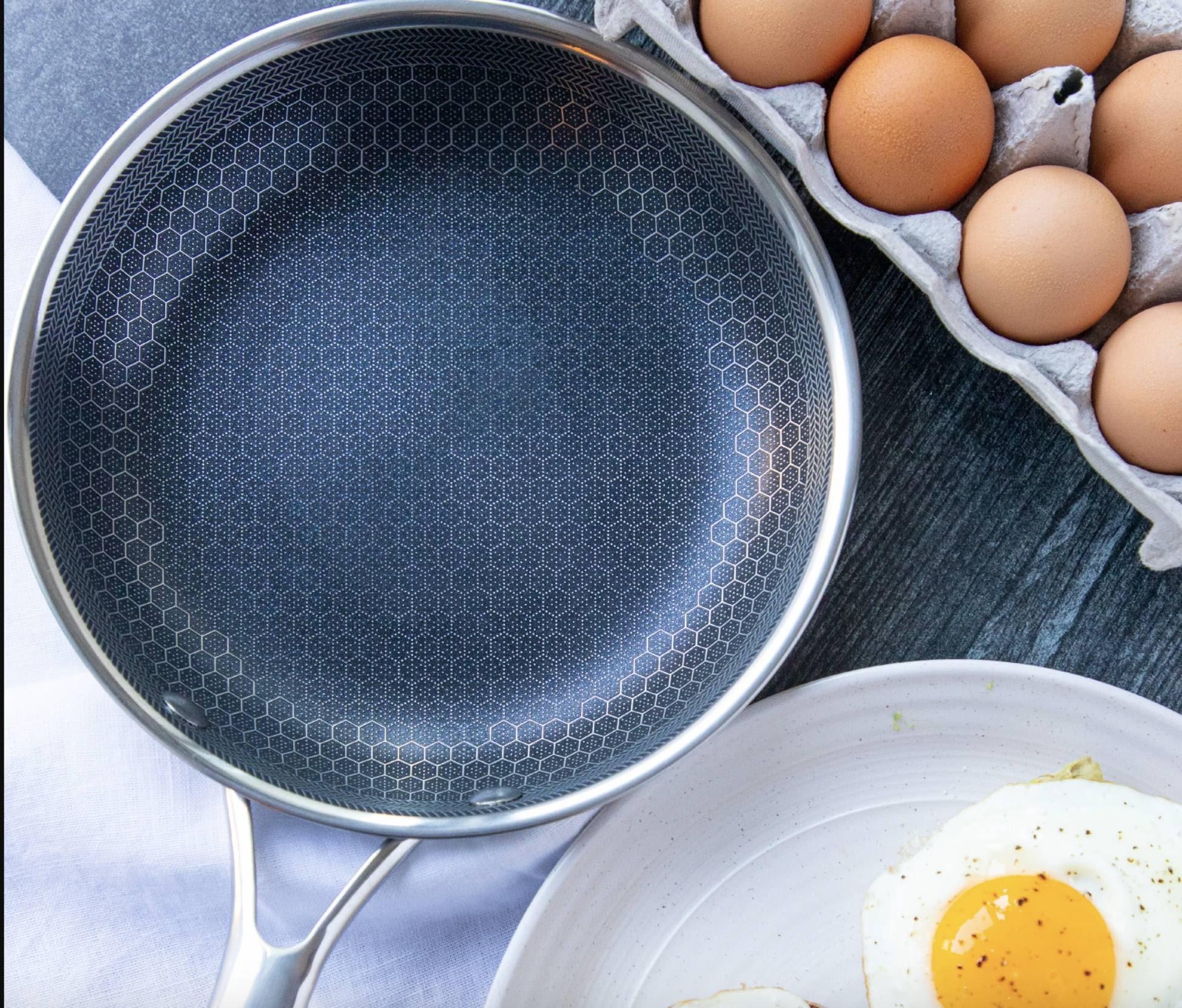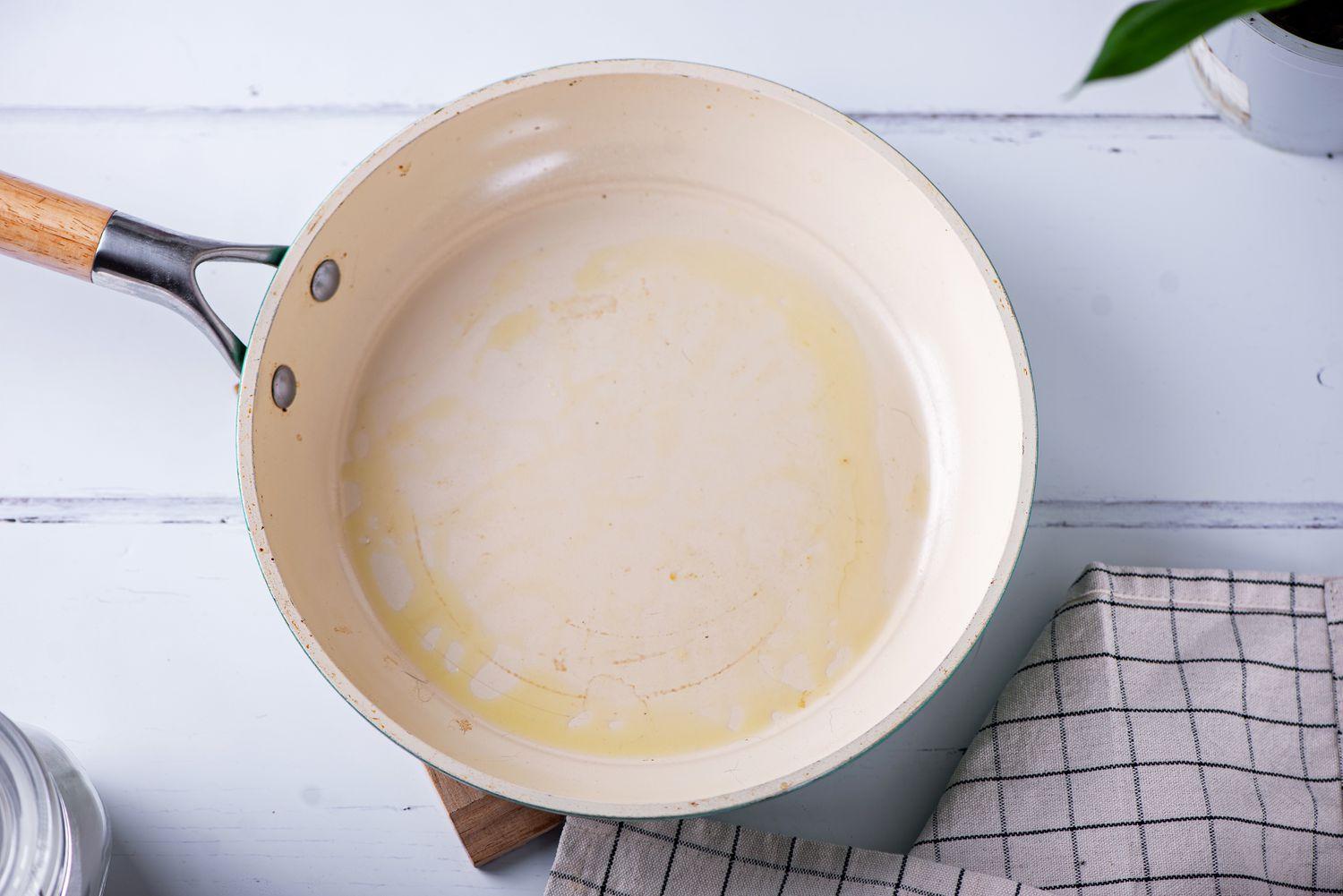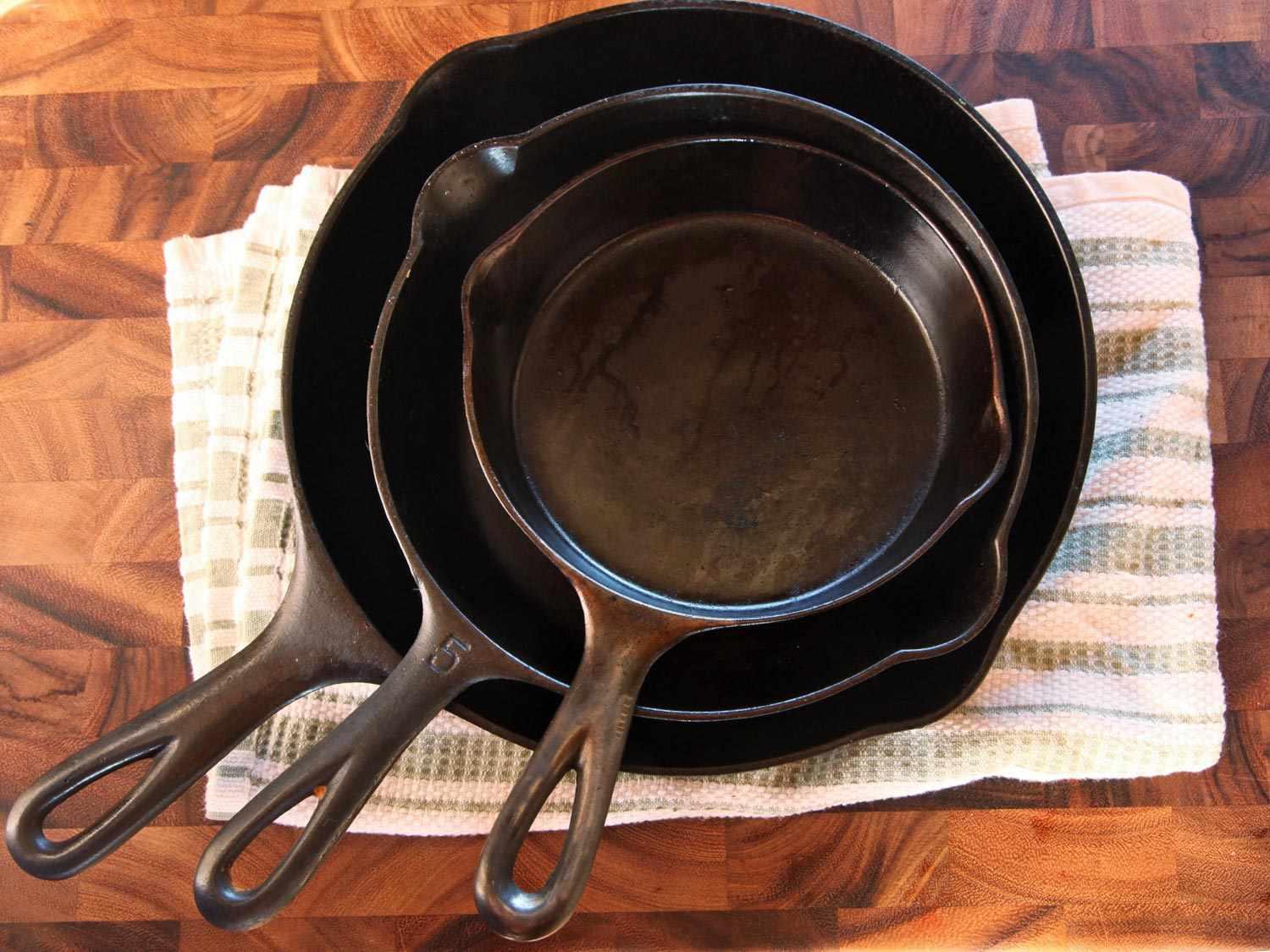Choosing the best pants means comparing different materials, even before considering individual manufacturers. The offer is wide, both in terms of the characteristics of the dishes and the different types of cooking. Therefore, orienting yourself among these variables by identifying the most suitable and versatile tool may not be easy. Recently, we have focused on research related to the possible harmfulness of non-stick coating. This time, to complete the study, we will try to identify the best materials by evaluating the strengths and weaknesses of the various materials.
Recognize the best pans

Before evaluating the characteristics of the different materials, it is important to consider three details that affect duration, efficiency, and ease of use.
- The first aspect that we can appreciate when picking up the dishes is their weight, which can already tell us something about the quality, sturdiness, stability, and ease of use. The best pancakes are never too light, even if excessive mass can penalize handling. Based on our physical characteristics and our cooking skills, we should opt for a robust but not too uncomfortable utensil to use. When in doubt, however, it is better to buy a pan with a solid structure and a greater weight, which we can get used to while cooking.
- The second element to carefully evaluate is the thickness of the bottom, which, in the best pans, determines good heat distribution and secure support on the stove. Crockery with a base that is too thin tends to deform over time, showing a sort of camber in the central part, which can negatively affect the internal coating and cooking.
- The handle shouldn't be overlooked either. In order not to penalize stability, the handle must not weigh too much compared to the body of the pan. The presence of a thermal coating is useful, but for some materials—such as stainless steel, for example—it is not essential.
THE MATERIALS
After these considerations, the most decisive factor in choosing the best pants is the evaluation of the materials. As we will see, this aspect determines the most important characteristics of the cookware, such as the types of use, the appropriate cooking, and the resistance to wear. Now we will see what the peculiarities of the individual materials are, highlighting their strengths and weaknesses.
TEFLON

This is the most classic non-stick coating, usually dark in color, combined with an aluminum base. According to the different manufacturers, the commercial names of this PTFE-based treatment are many, as we have already specified in our previous article.
Please
- The price is probably the most attractive item. Teflon-coated dinnerware is typically inexpensive because it has been replaced by more durable treatments.
- As long as the coating is in good condition, it is easy to wash because cooking residues do not stick.
- The non-stick feature allows you to cook with less fat.
Defects
- The effectiveness of coating does not last long, and the surface is easily marked.
- Dishes with Teflon surfaces must be used with care. They are suitable for medium-low temperature cooking, always below 250 degrees Celsius (boiling, frying, and sautéing), therefore no grilling. They should be combined with rounded and wooden tools rather than pointed or sharp tools.
- The same attention should be paid to washing: no abrasive sponges.
CERAMIC-LIKE COATING
The first substitute for Teflon was the ceramic-like coating with Sol-gel technology, always adopted on dishes with an aluminum body. This treatment involves painting with white ceramic powder, which gives the surfaces characteristics similar to glassy materials. The success of ceramic-like materials began in 2008, benefiting from the distrust of Teflon. The initial boom, however, was short-lived due to the treatment's limited non-stick capabilities.

Please
- The ceramic-like material spreads heat evenly and holds the temperature quite well.
Defects
- The coating has limited non-stick capabilities. Therefore, cooking requires a minimal liquid base.
- While it resists heat better than Teflon, it is not suitable for high temperatures. It's better to limit yourself to cooking at medium temperatures, such as frying and browning.
- It suffers from aggressive washing, not much less than Teflon.
- Again, sharp or pointed utensils should be avoided.
- takes longer to warm up.
COATING WITH A STONE EFFECT
In the constant search for the best pans, the soapstone-inspired nonstick coating is the latest and hottest. As in the case of ceramic-like items, it should be noted that even this crockery is not made of stone. The treatment, which is applied to an aluminum structure and reinforced with mineral particles, is based on PTFE, which is similar to Teflon.
PLEASE
- It is stronger than Teflon.
- It has excellent non-stick properties, much better than ceramic-like ones. It is the best commercial coating designed to prevent food from sticking.
- At an affordable price, you can buy good-quality pants.
DEFECTS
- This treatment is also subject to wear.
- takes some time to warm up.
- Although quite resistant, it is not suitable for cooking at high temperatures, such as grilling. In essence, it is subject to the same precautions as Teflon.
- Contains PTFE. As we detailed in the previous article on non-stick pans, research has focused on these substances, and to date, there are no total guarantees regarding their safety.
ALUMINUM
It is the most widespread material in professional catering. Although it lacks excellent nonstick properties, there are modern treatments that improve the characteristics of the dish's bottom.
PLEASE
- It conducts heat very well.
- Although fairly solid, it has a low weight.
- The best pans in aluminum are quite versatile, even if they perform best at temperatures that are not very high and in cooking that is not too prolonged over time.
- It doesn't have a particularly high price.
- If treated with care, it can last for many years.
DEFECTS
- Crockery with GHA (golden hard anodizing) treatment should always be preferred; particular oxidation with the use of silver ions strengthens the surface, preventing the transfer of material residues. Bare aluminum in contact with acidic or salty foods can permeate the foods, with harmful effects on health. This aspect has been studied for years and confirmed by research, such as that published in PubMed and Medscape.
- The firings require liquid bases. However, the GHA also improves the non-stick properties of the aluminum base.
- Even the crockery made with this metal must be washed delicately and with non-aggressive products.
IRON
The use of iron for cooking dates back to the origins of civilization. In the peasant world, however, these tools remained the most used until a few decades ago. The characteristics of this metal, however, make it an excellent alternative even today.

Please
- Iron crockery is very sturdy, and with minimal maintenance, it can last for many years. Without too many precautions, therefore, we could pass them on to children and grandchildren.
- They have a natural non-stick property, not comparable to specific coatings but still appreciable, especially up to medium temperatures.
- They easily tolerate even the highest temperatures. The ideal use includes cooking that is not too prolonged over time, such as frying and browning.
- Any transfer of iron residues in foods is not harmful, as in the case of bare aluminum.
- However, the best iron pans have an affordable price.
Defects
- Iron can rust, therefore after washing the dishes they must be dried perfectly, then lightly greased with olive oil and stored in closed and dark places. Cleaning can be done with a damp rag or by boiling a little water in a pan. No dishwashers or sponges that are too abrasive, because the thin patina that forms has a protective function.
- To preserve the patina, it is best to avoid direct contact with very acidic or particularly salty foods.
Enameled cast iron
The use of cast iron is also very ancient. It is an alloy that is distinguished by two particular characteristics.
Please
- Cast iron crockery is the most suitable for withstanding high temperatures. They can also be used on a live fire in a fireplace or on a barbecue; it is no coincidence that stoves are built with this material. Cast iron is excellent for grilling and, therefore, for making plates or grills.
- This alloy, however, is also appropriate for slow cooking.
- Enameling has good non-stick properties.
Defects
- Cast iron crockery is very heavy. This material is used for stoves, but also for gym weights.
- Like iron, it is not suitable for very acidic or particularly salty preparations.
- It requires iron-like maintenance and washing, complete with oiling.
- enamel coating can be delicate.
- Unlike steel, cast iron is brittle and can break if dropped.
STAINLESS STEEL
Stainless steel is certainly one of the most durable and resistant materials among those we are considering. Here are its strengths and weaknesses in the kitchen.
Please
- Among those in the medium range, it is the material with the least resistance and maintenance problems. The best stainless steel pans could easily be used for a thousand years.
- It can withstand any temperature, even if it is ideal for boiling.
- It does not require precautions in washing.
Defects
- Unlike iron, it has no non-stick properties. Those who opt for this material must resign themselves to stirring often and using liquid bases for cooking. Let's not forget that burned foods that stick to the bottom are also harmful.
- It has poor heat conduction, worse than the metals we are considering. Because of this, even the best stainless steel pans typically don't have a heated coating on the handle.
- For the reasons just mentioned, this crockery must have a triple-layer bottom, with a central aluminum part to facilitate conduction.
- Although very resistant, this alloy also suffers from salty and acidic foods. It's better not to let the salt settle on the bottom of the pans.
- Nickel allergy sufferers should prefer 18/0 steel, which is free of this metal.
TITANIUM
Used in Japanese haute cuisine, this metal boasts qualities that place it above both iron and stainless steel. After all, the best pans made of pure titanium stand out for being rather exclusive utensils. This material can also be combined with bases made of steel or aluminum.
Please
- Overall, it is the best-performing metal and is used in the best pans due to a combination of resistance, nonstick, lightness, thermal efficiency, and health safety. In a thousand years, as well as being able to use the same pan, our descendants would thank us for uniform cooking and for foods that don't stick to the bottom.
Defects
- The price is the primary flaw in the tools made from this precious metal.
- Titanium crockery also has an Achilles heel: it cannot be used on induction hobs.
TINNED COPPER
The body is made of copper, while the inner bottom is lined with tin. The best pans made by combining these two metals are undoubtedly the noblest and most decorative utensils in the kitchen. They have been used in large catering for some time and combine a remarkable aesthetic value with excellent functional properties.
Please
- They are the best pans in terms of thermal conduction. Copper acquires and releases heat very quickly, ensuring perfectly homogeneous cooking without wasting energy.
- If they are clean and well cared for, they shine like jewels, embellishing the kitchen.
Defects
- The tin-plated bottom must always be present and in good condition, because copper oxide is poisonous.
- For the same reason, they should be used carefully, with rounded wooden spoons. The washing must be delicate.
- Over the years and with wear, the crockery may need to be re-tinned. This renewal procedure, however, makes the best pants almost eternal.
- Given the characteristics of the metals, the bottom must be very thick and robust.
- Tinned copper is not suitable for very high temperatures.
- Tableware made from these materials is very expensive.
PYREX GLASS
This material, treated to resist high temperatures, stands out above all for one peculiarity.
Please
- Those made of borosilicate glass are by far the healthiest: there is no risk of harmfulness or allergenicity.
- It washes easily and without particular precautions.
- Unlike many other materials, Pyrex is excellent for holding food for a long time.
Defects
- It's better to use it only in the oven. The more modern materials, however, can also withstand an open flame.
- It suffers from strong thermal shocks.
- It is very fragile.
VITRIFIED TERRACOTTA
Here is another material traditionally used in the kitchen with characteristics suitable for particular conditions.
Please
- It ensures uniform cooking at constant temperatures. It is ideal for simmering preparations, as well, because it preserves the aromas of foods well.
- It guarantees excellent non-stick properties.
- It can be used both in the oven and on a live flame, as long as it is not too lively.
Defects
- The bottom should not be scratched with pointed or sharp metal tools.
- It is better to choose ecological enamels without heavy metals.
- Vitrified earthenware crockery is quite heavy and fragile.
- They have a considerable price.
SOAPSTONE
The most popular non-stick coating at the moment is inspired by this mineral. Soapstone, however, is quite another thing. It is the most "ancient" of kitchen materials, used to create utensils with distinct characteristics and high aesthetic value.
Please
- It combines the thermal properties of terracotta with those of cast iron while not requiring glazing thanks to its great natural non-stick properties.
- It is the best material for long cooking times. The plates are also ideal for grilling.
Defects
- It takes a long time to heat up, but it keeps the temperature steady for a long time.
- The manufacturer must certify the absence of asbestos in the stone.
- Soapstone tools are highly valuable but very expensive tools.
- They are very heavy and quite delicate.
- They require non-aggressive cleaning.
What are the best pans?
After having considered the materials most commonly used to make tableware, some general indications can be drawn. Generally, we tend to overlook the importance of the quality of kitchen tools. At the time of purchase, we focus too much on the price and the non-stick properties, overshadowing the ability to last over time and the suitability of the utensil for a specific type of cooking.
NOT ONLY NON-STICK
As we mentioned in the previous study on non-stick pans, the beginning of the diffusion of these tools dates back to about forty years ago. Since then, however, it seems that in the kitchen it is no longer possible to do without it, and often almost all the dishes in homes are equipped with this coating. Getting used to using them for all cooking is wrong; as we have seen, each type of preparation would require a specific material. Not necessarily the best pans are non-stick. For a small family, having a couple of pieces of cookware with a non-stick coating might be enough quality to be used at the right temperatures and for preparations that require this coating, such as those based on eggs or cheese.
Choose based on quality and usage.
There is no perfect material for all cooking methods. The best pans, therefore, are those that are suitable for specific uses. By evaluating the characteristics of the individual materials, we were able to appreciate these differences. Furthermore, when we have to buy the dishes we will use for cooking, let's not just consider the price. A better, more durable tool, while more expensive, will make up for the investment in the long run as well as offer superior performance. Treating yourself to the best for the tools we use every day—to which we entrust our health and the success of our dishes—is always the right choice. Following this reasoning and wanting to mention some of the materials considered previously, crockery in iron, GHA aluminum, cast iron, stainless steel, terracotta, Pyrex, soapstone, and titanium are certainly advisable.
After this insight into the best pans, it may be interesting to read our article on research into the possible harmfulness of non-stick coatings.
Related Articles:
